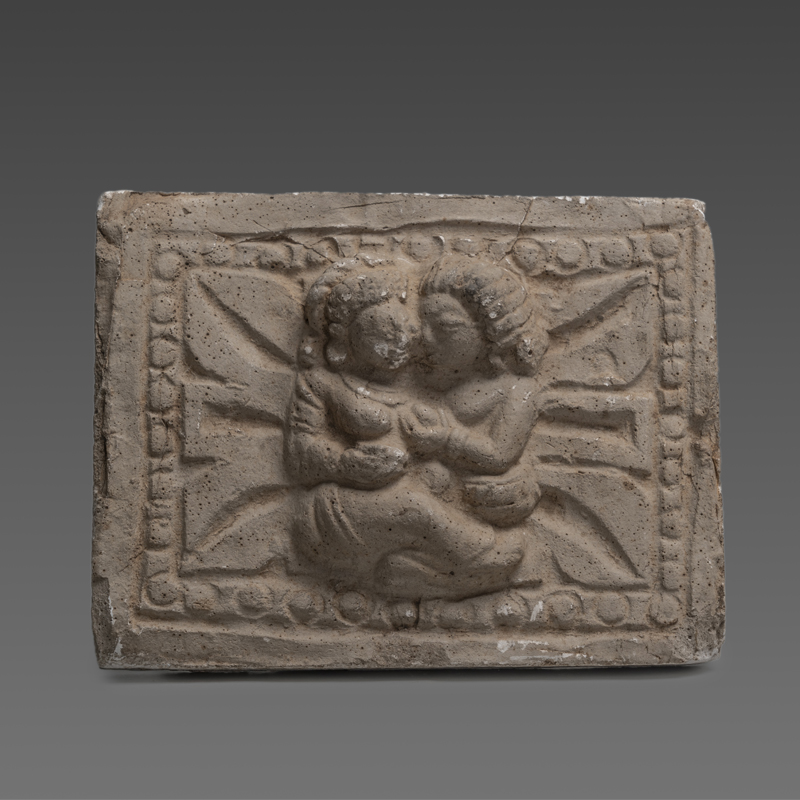Mithuna
Description
A carved brick depicting an amorous couple (Mithuna)
The pair of male and female in Indian art has a much wider connotation than lust as sexual or procreative partners. They are also partners in religious duties such as the performance of important ceremonies and rituals to acquire religious merit. In fact, no Grihya and other sacrifices could be performed by a single man, as it was considered, incomplete. Yugala or Mithuna symbolised completeness or totality of life and therefore is considered auspicious. The presence of Mithuna sculptures on Indian temples reflects the partnership of man and woman both in the act of dharma and karma. This concept is emphatically expressed even in the Rig veda wherein it is stated: "they accompanied by their wives, worshipped the fire who is worthy of worship." The Dharmashastras also enjoin that from the time of marriage the husband and wife work together for the ultimate fulfilment of life.
Rigved, 1.72. 5. 2. Gobhila Grihyasutra, 1, 4, 16-19. 3. Kane, 1941. P. 553. 1977, p. 477, fig. 256. 258 and 805.
Collection
Sculptures
Object Type
Architectural fragment
Material
Plaster Cast
Schools/Culture/Period
Gupta Period
Technique
--
Date
C. 5th Century CE
Location
Mirpur Khas, Sindh
Dimension
16x20x2.4 cms
